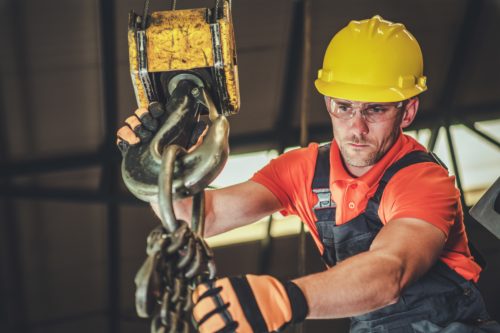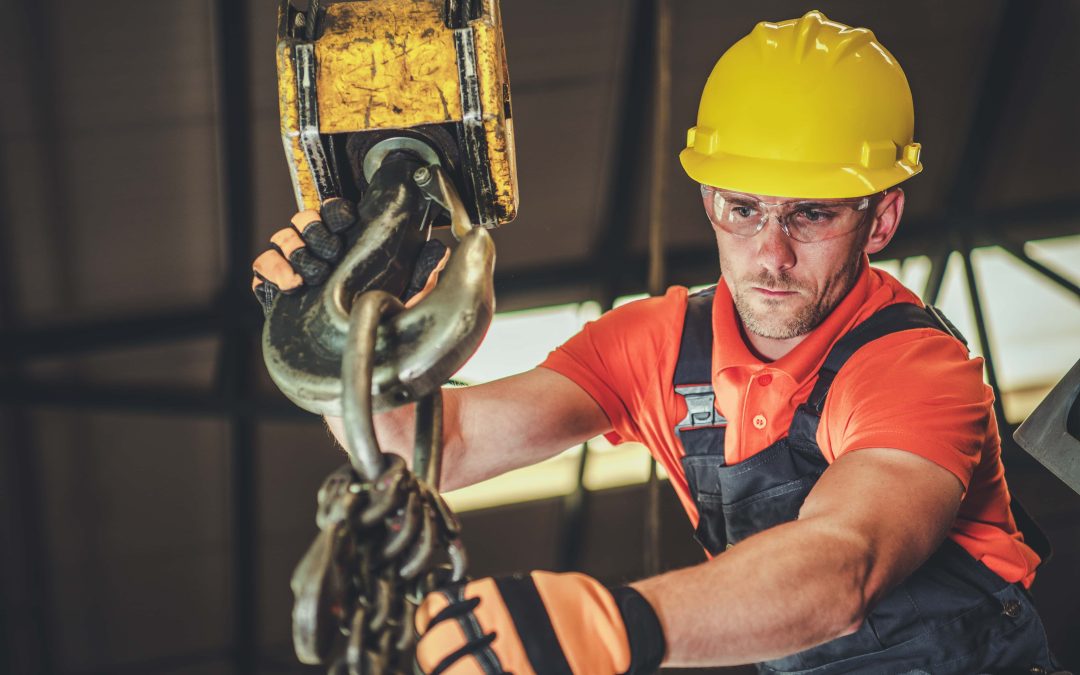In the manufacturing and construction industries, overhead cranes lift and transport necessary materials for a wide range of applications. When installed and used properly, these systems facilitate safer, more efficient operations. However, improper installation and usage can cause accidents that result in severe injury to life and limb. The key to preventing these incidents is recognizing their sources so industry professionals can better understand how to avoid them.
The following blog post outlines the four major hazards related to crane installation and usage and the recommended safety procedures to circumvent them.

Common Crane Hazards
Most overhead crane accidents stem from one of four major causes:
1. Excessive Load
OSHA estimates that 80% of all crane accidents and failures result from exceeding the rated capacity of the crane. Overloading can cause significant damage to the crane, decreasing its structural integrity and often leading to complete failure. Once these occur, crane operators and nearby personnel can be injured by falling or failing parts.
Overloading may occur in several different ways:
- Handling a load heavier than the crane’s capacity
- Swinging, dragging, or suddenly dropping a load
- Side-loading a boom (Any time the load’s center of gravity is not directly under the crane.)
For crane operators, understanding these leading causes of overloading and how to avoid them necessitates comprehensive training. A typical training regimen may include imparting knowledge about the principles of load handling and hoisting capacities for various conditions and operating conditions.
2. Falling Materials
In the workplace or at a jobsite, falling materials can cause significant injuries or fatalities. These incidents can occur due to many reasons, such as:
- Visual impairment
- Improper or inadequate rigging of materials
- Mechanical failure
- Ill-timed movement of materials
- Operator incompetence
Most, if not all, causes of falling materials can be avoided through the careful operation of the crane, which is facilitated by employing well-trained and qualified crane operators.
3. Insufficient Inspection and Maintenance
Through use in operations, loading bearing equipment experiences damage that can affect performance. This damage can take the form of worn-out ropes, electrical wires, and structural components. As these systems play a critical role in lifting and transporting heavy materials, ensuring they are in proper working order through regular inspection is essential to preventing employee injuries and fatalities.
As outlined by the Crane Manufacturer’s Association of America (CMAA), crane inspectors should have the following:
- At least 2,000 hours of experience inspecting, maintain, repairing, and testing cranes and hoist equipment
- Knowledge of safety and design standards; federal, state, and local codes; and safe operating practices
- Understanding of proper reporting and documentation protocols
There are four types of inspections, some performed by a crane inspector and some by the operating personnel:
- Initial Inspection: OSHA 1910.179requires an initial inspection for all new and altered cranes.
- Pre-shift Inspection: It is advisable to do an inspection every time there is a change in the crane operating crew, such as when a new shift starts.
- Frequent Inspection: These are done by certified inspectors. The frequency of these inspections varies with the type, size, and capacity of the crane.
- Periodic Inspection: These are detailed visual inspections and operational checks that cover every part of the crane.
Partnering With American Crane
At American Crane & Equipment Corporation (ACECO), we provide a wide range of material handling equipment, including overhead cranes, for a diverse set of industries including aerospace, automotive, construction, marine, mining, and waste processing. As a leading manufacturer of high-quality standard and custom systems, we fully understand the nuances of safe and efficient crane operations and make sure to adhere to all CMAA Guidelines. To learn more about how to identify and avoid common crane hazards, contact us today.


